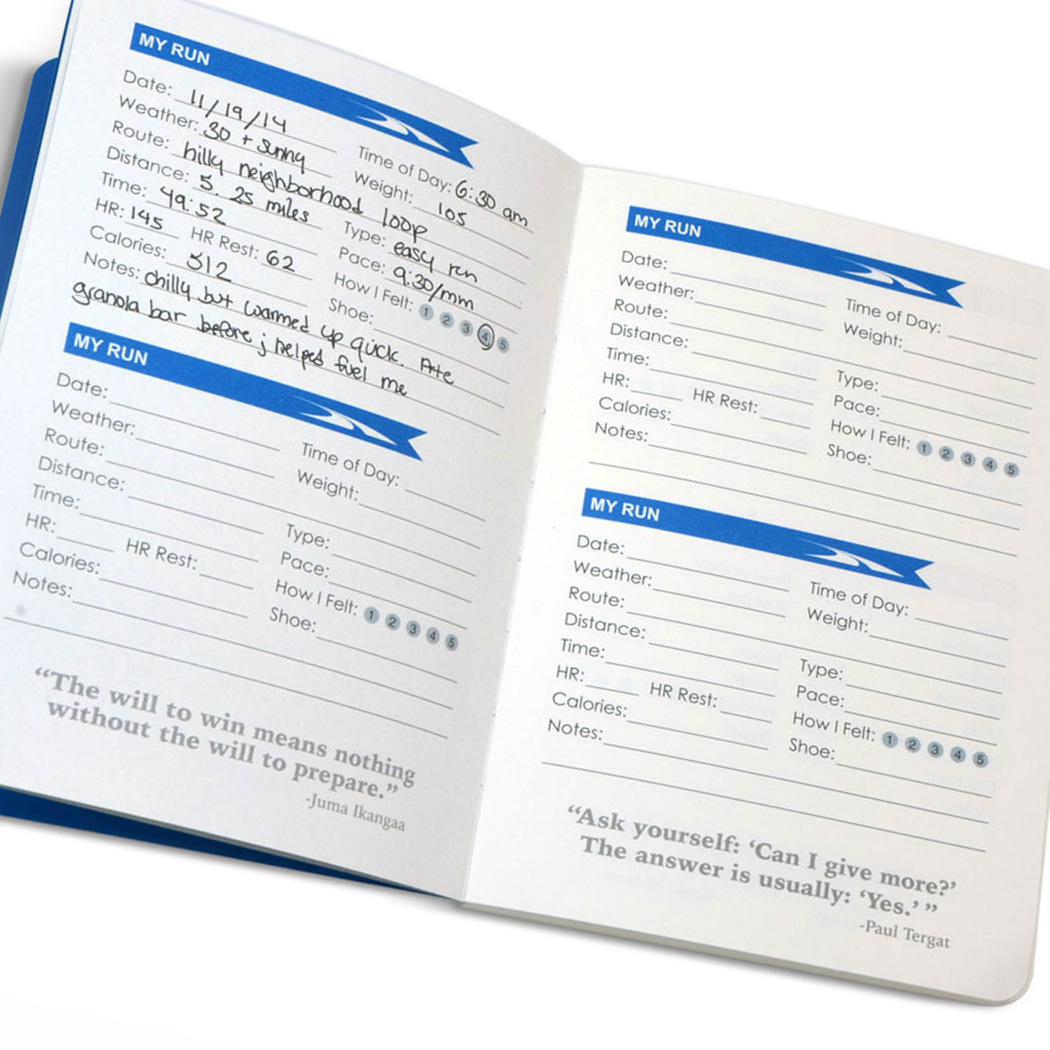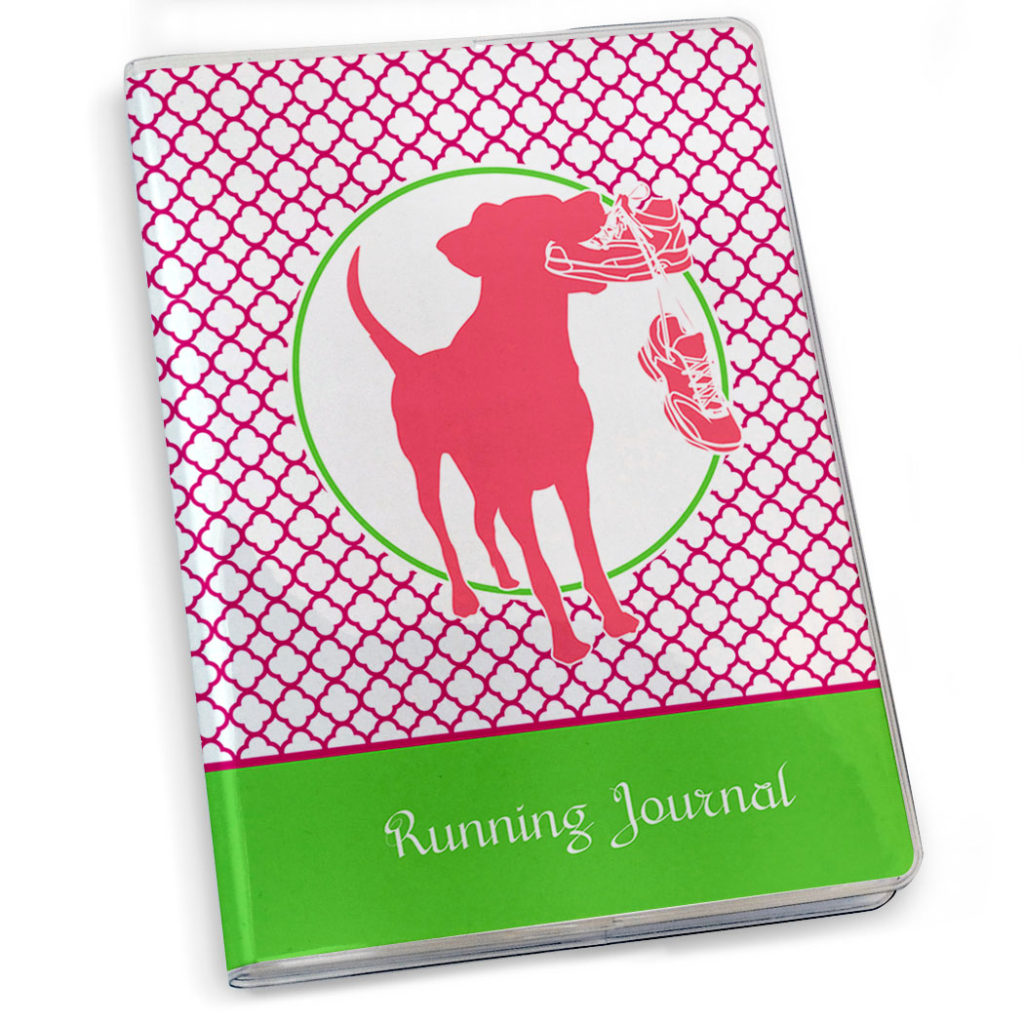ONLY $5.99 Shipping: Flat Rate Economy Shipping*
Free Shipping: Free Economy Shipping is available on orders over $100*
* Free Shipping is only available to valid addresses located in the contiguous U.S.
* Some exceptions apply
Come, run along with us as we share our joy of everything running.

We all have ways to keep track of the important things in our lives. How often do you go grocery shopping without a list, for example? Do you write a to-do list or use content management software at work to keep track of your tasks? Of course you do. It would be chaos, otherwise. We keep lists and logs to make our lives easier, and so we can track our progress. This is exactly why so many runners keep running journals – and why our running journals are so popular. If you don’t, I think you may change your mind after reading this.
01. You’ll Have an Accurate Log of Your Run
Most people can’t tell you what they did two Wednesdays ago, unless it was something truly spectacular… like they took a trip to Paris or got engaged. As a result, while you may have actually increased your speed or the new route you tried at the recommendation of a friend was actually one-half mile longer than you usually run, you might not remember those smaller details, when you think back weeks or months later. However, if you keep a daily running journal, you’ll always be able to look back and see your daily distances, speeds, how you perform in specific weather, and track other important things such as your endurance and weight fluctuations. (I find it is helpful to write my entry right after I complete a run, or as soon as possible after, to ensure accuracy and keep track of important things, such as whether or not I am properly hydrating for all of my runs.

2. Accountability, Accountability, Accountability!
While it’s one thing to say “I’m running five days a week” or to come up with goals for distance, such as, “I’m going to run a three-minute mile by the end of the month”, it’s also easy to skip a day running when you tell yourself it’s okay “just this once”, or to miss the goals you’re setting for yourself, even when training for a race. The human brain has an amazing way to justify anything when we’re feeling lazy or unmotivated, and yes, that happens to the best of us. When you’re keeping a running journal, that blank entry for the run you skipped or actually writing down a time of 15 minutes when you had planned a 45-minute run for that day is an excellent motivator. It keeps you honest, and while the book isn’t going to lecture you, you’ll know you’re not doing everything you planned, and thus, not meeting your goals. And that blank spot will be there, almost like Edgar Allen Poe’s “Tell-Tale Heart”, reminding you. “I’m still here. I’m still here. You had to leave me blank.”
03. You’ll See Your Success Story
Sometimes, it’s easy to become discouraged, or lose sight of the progress you’re making as a runner. Like anything worth doing, progress and success can be incremental. When you keep a regular running journal, you may well be shocked by how far you have come as a runner in a relatively short period of time, simply by reading your older entries. You might forget that there was a time you struggled to run a mile, when now, that’s your warm up. You also might not remember the times you gave up on that mostly uphill route you run twice a week now. When running is a regular part of your life, it’s great to have a document of everything you have done as a runner, and your journal is very likely to become something to celebrate when you look back and see all you have accomplished and in a surprisingly short amount of time.
04. It’s Another Tool in Your Arsenal
Tracking your runs is beneficial when training, as you can quickly identify your strengths and weaknesses, and work on ways to improve your runs. Sometimes, it can be a small adjustment you wouldn’t otherwise think of, until reading the journal. A great example? I had two pairs of running shoes. I looked back at my journal and saw I appeared to be struggling on days I wore my purple ones, as opposed to my green ones. It turns out the green ones fit a little more comfortably, and might have been a slightly better fit for my foot, overall, so my form was improved when I ran in those shoes, and suffered some from the shoes that just didn’t fit quite right. I purchased a second pair like that and noticed I’m no longer struggling the way I was. I don’t think I would have put this together if I didn’t keep notes on things like the weather, routes, and yes, my equipment, in my journal


05. Tracking Goals = Achieving Goals
We all have goals, in all areas of our lives, including running. I find it motivational to see a list of the goals I have – everything from short term ones (join a local running club) to major, long-term goals (head to Paris to participate in a marathon.) Checking them off makes the biggest ones seem far more reasonable, and when, for example, running a marathon in New York City was once way down on the list and you finally complete the race, it reminds you nothing is impossible. In many ways, it’s like a lifetime “to do” list, only with a lot more things to be proud of than say, your list of spring cleaning chores. Keeping a goals list in your running journal is the perfect way to remind yourself what you’d like to do, as well as what you have done.
These are my reasons for keeping a running journal, though other runners may have their own priorities and reasons. Did I leave anything important out? Is there something your running journal has helped you achieve? Let me know – send an email to blog@chalktalksports.com and you may see your tips in a future blog. Happy running!